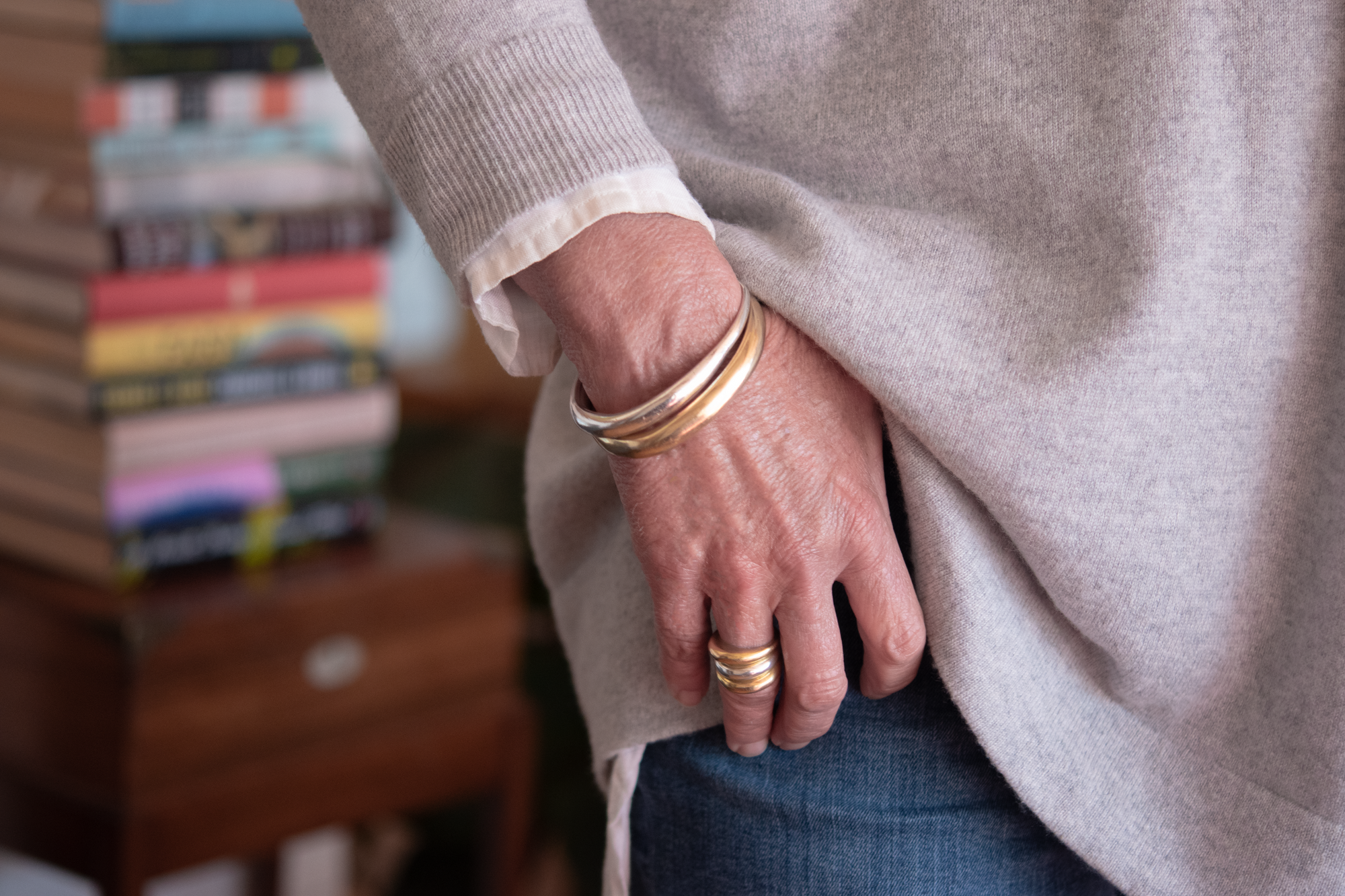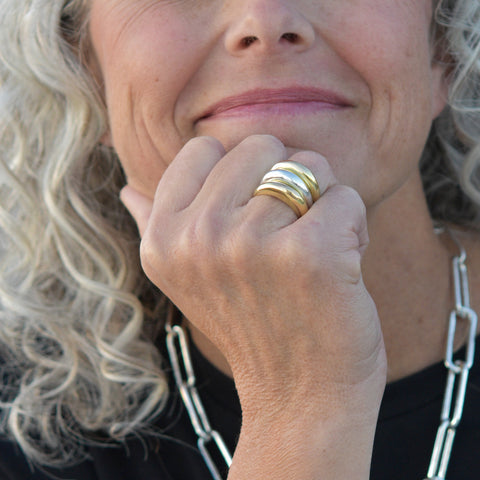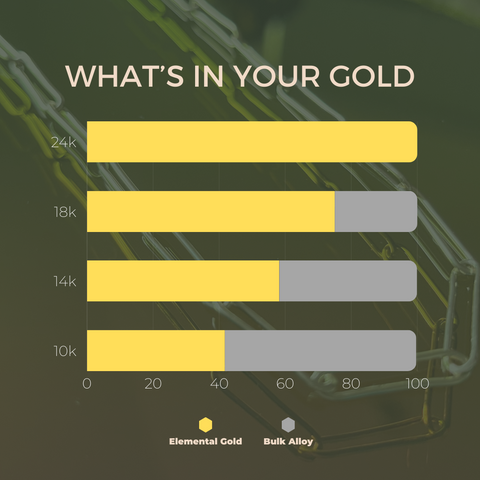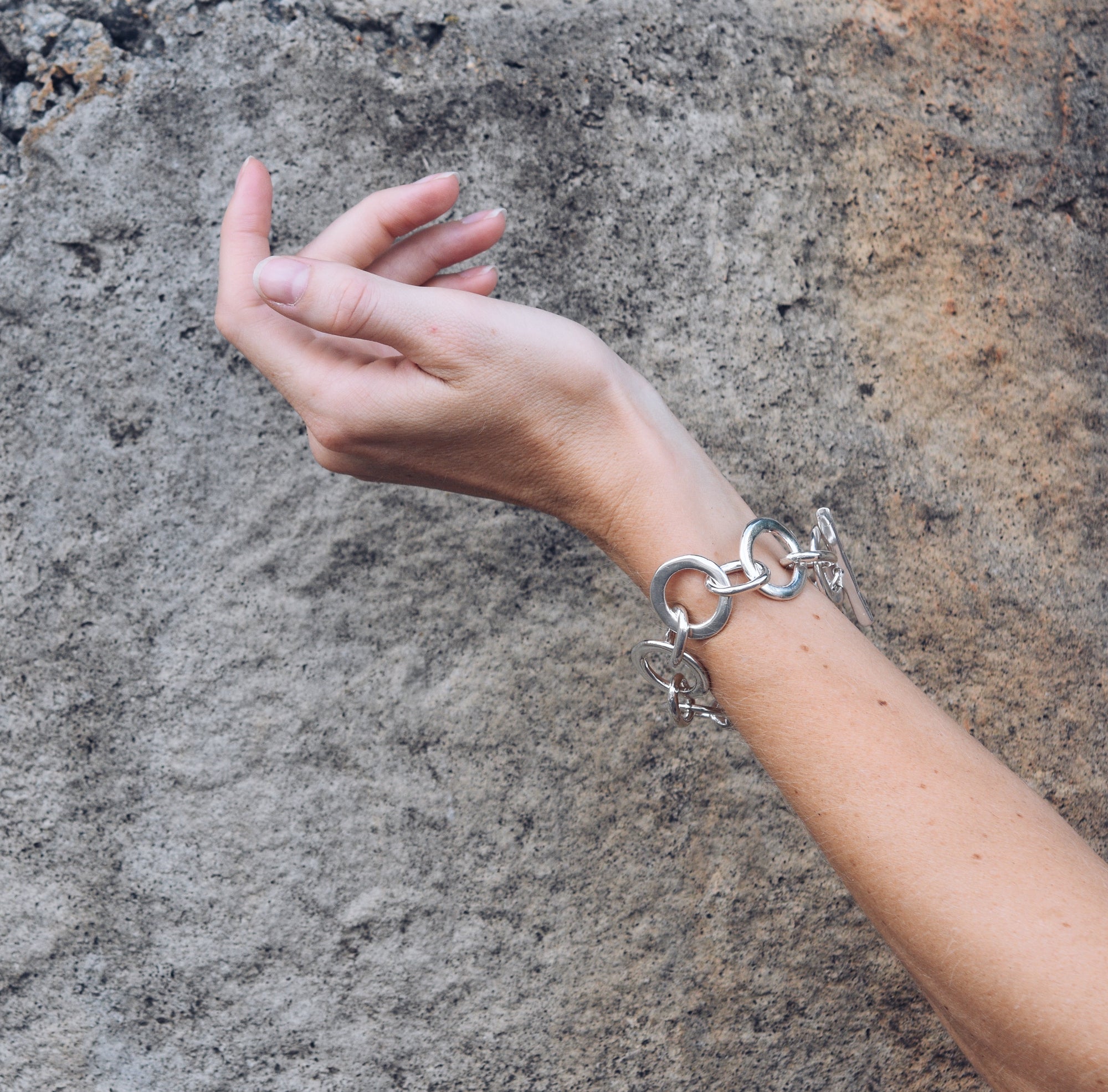
To Brass or Not to Brass: Navigating Metal Choices in Jewelry
We had a client reach out to us recently to ask us if we could cast the Gold Ring in brass. We said no. It wasn’t the first time we got that request, or the first time we said no to it — so we thought we would discuss here.
The Dilemma: Fine Jewelers Make Fine Jewelry
First, some backstory: Liz and I have worked with a handful of jewelry business coaches and experts over the years and we have consistently heard the same advice: pick a lane. Don’t confuse your customer by trying to be everything for everyone. Decide what you do, and do that thing. This has always been relayed to us in the context of our offering - if you want to be considered a “fine jewelry” brand, only offer fine jewelry.
This is good advice, and in many ways it has served us well. However, every now and then, Liz’s mind (and hands) produce a design that we really want to offer in gold, but the chunkiness of the piece (i.e. the weight of the final product) pushes the gold price so high that even we, in the throws of excitement over the new product, recognize it as a vanity project that will languish in the boxes that we keep inventory in.
From Concept to Creation: A (Fine) Brass Bangle is Born
Our new cast bangle is one such product - a product that Liz and I both worked on for so long that our eyes had crossed (her carving wax for literal days, me annoyingly finding issue with very minor characteristics - love you, Liz! Thanks for not firing me! 🫣). When it finally arrived as a finished, finished, final, redesigned 14 times, DEFINITELY FINISHED WE’RE CALLING IT product, we knew we wanted it in gold…but when we got the quote back from the caster, we realized that this bangle was going to be a $10,000 bangle (give or take with market fluctuation).
So we cast it in brass, too eager to not see it in a gold tone. We test wore it in brass. And we decided to offer it in brass...
This was a deviation from the advice of coaches. Brass was off the table for LHMS……Buttttt…….we do have one item already in brass (small brass cuff & medium brass cuff)….annnddddd we did reeeaaalllyyy want this to be available in gold tone……….(cue the type of mental gymnastics you do when you know something is a little naughty, but you are determined to do it anyway)...
We took what resonated and left the rest, as they say! We cast the damn bangle in brass and you can get yours here.
Customer Requests and Design Challenges
Liz has been wearing the silver and brass versions layered together and it’s a stellar, minimalist, mixed-metal look. Metal forward in just the way we love, design forward in the way only Liz can create. A chef’s kiss.
The client who's request spurred this blog had just ordered her own set of the silver and brass bangles, and she also ordered two of the silver rings, almost exactly recreating Liz’s daily look - amazing! But she included a note in her order: “can you make the ring in brass to match the bangle?”
Uh-oh…
Understanding Metal Alloys: Brass, Sterling Silver, and Gold
Many of you have likely had the experience of getting an inexpensive piece of “gold” tone jewelry and it eventually turning your finger green. Well - brass looks great when its brand new, but is over 60% copper, which oxidizes to green, and when close to the acidity and porosity of the skin, that means your skin turns green as that metal oxidizes and is absorbed.
This is not something we want for our customers (or ourselves!). But this was a legitimate question - this customer had just purchased a bangle in brass - why would we not offer another product in brass, especially upon request? Why is one okay, and one isn’t? Why do we sometimes say yes and sometimes say no?
The Importance of Material Education
We realized there’s a component of product education that we haven’t been owning. So we are here today to break down what each metal is, and ultimately give you a good reason why we choose what we choose.
Brass is over 60% copper, mixed with zinc. Sterling silver (sometimes annotated 925 sterling) is 92.5% pure silver, with 7.5% copper, zinc, and nickel, in varying quantities. Gold gets a little more complicated…
Exploring Karat Weights: 18k, 14k, and 10k Gold
We work with 18 karat gold primarily - 24 karat gold is 100% pure elemental gold, but it’s really too soft to use for most jewelry, so we typically go for 18k. This represents 75% pure, elemental gold — or 18 parts pure gold out of 24 total parts — which is then mixed with alloys (i.e. other metals) that make it stronger and more durable. Similarly, 14k is around 58% pure gold, with the same alloys as 18k, just in relatively larger percentages (mostly additional silver, making it lighter yellow overall). Mixing the gold with these other, stronger metals lends strength and hardness to the final product, but gradually changes the appearance of the gold. We like 18k because it retains that deep buttery yellow color that says GOLD, with the amped up durability of the alloys.
When we denied the customer request to cast the rings in brass, we thought we would figure out what the rings would cost in 10 karat gold. This is a commonly available karat weight, but one we rarely work with. We got the quote back, we sent it off to the customer. She responded promptly - "will it look the same as the photo?"
Uh-oh…
Comparing Appearance and Cost
Here's a photo of the rings from our website:

The 18k rings are buttery and bright in the way that really can’t be achieved with anything other than 18k. They are true metal, in the sense that they could be buried in your back yard and left there for 100 years, and they would still shine and sing when you dug them back up.
But we knew that the change from 18k to 14k makes a visually identifiable difference in appearance, so we asked our caster for the percentage alloy composition they use for 10k gold. We learned something we knew intuitively, but couldn’t name: 10k gold has more silver in it than gold, meaning that it is much much much lighter and less “yellow gold” than 18k. Good news for lovers of white gold...bad news for our customer...
So we wrote back to our client - no, it wont look the same. We think it would look cool in its own right, but not the same as the photos on our site.
Making Informed Decisions
Here’s a chart showing the relative percentage gold in the different gold karat weights:

As you would imagine, the more gold a product has, the more expensive it is. That’s why our new bangle would cost over $10,000 in 18k, but costs just $299 in brass.
We offer the bangle and the hammered cuff in brass because we love the look so much in a gold tone AND we feel confident that these are pieces of jewelry that will be removed before a shower, at night, and certainly at the beach or on vacation. They are bracelets, so they rarely get involved with hand washing. All of this makes them that much less likely to oxidize and turn your skin green.
Rings are no such case.
With prolonged wear or excess chemical exposure (like sunscreen), the cuff and bangle would also turn your skin, but we have both test worn these pieces to death with an eye toward not being careful and it's never happened for either of us.
In embracing the nuances of metal choices and educating ourselves and our customers, we reaffirm our commitment to crafting heirloom jewelry that not only looks great, but stands the test of time, ensuring that each piece tells a story as unique as the wearer themselves.
💛


